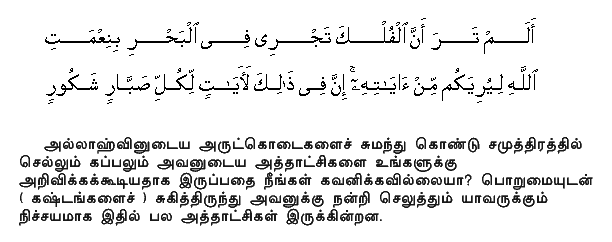India Travel Tips
|
India - The Travel
Destinations
|
|
Being a vast country with multitudes
of attractions throughout the country, India is a travel
enthusiast's paradise. From the sand dunes and forts of Rajasthan in
the Western India to the mangrove forests of Sunderban in Eastern
India and from the snow-capped peaks of Himalayas in the North India
to the golden beaches of Peninsular India - India is a tourist
delight that needs a closer look than you believe. With the vastness
of India comes the diversity of cultures, languages, food habits,
architectural styles, dresses, and symbols of religion. Travel in
India is a pleasure if you consider the sheer number of important
travel attractions available and thematic options they present.
Whether you are a cultural traveler, adventure traveler, wildlife
lover, honeymooner, or a general holidaymaker, India has something
for each one of you. From Taj Mahal in Agra to temples of Khajuraho,
from almost extinct Asiatic Lions of Gir to the proud Royal Bengal
Tigers of Ranthambore and Jim Corbett, and from the high altitude
adventure in the Himalayas to the basking in the glory of sun god at
the palm fringed beaches of Kerala and Goa - travel in India is a
lifetime experience.
|
Travel Tips for India - The
Introduction
|
|
A well-planned travel is not only
blissful but lingers fresh in the memory for a long time. One
obviously would love a hassle-free travel, as it is meant for rest
and enjoyment and above all to escape from the daily ordeal of life.
If on a travel too, one finds oneself running from pillar to post
and making last-minute arrangements, one would love to forget the
holiday and the horrifying memories associated with it. India is a
tough country, in terms of temperament and terrain. Before venturing
on a sojourn to India, one needs to follow some simple guidelines to
make the stay a pleasant one. Follow the tips in earnest and put
your best foot forth and come to India with a desire, and India
promises that you will leave the land with an ardent wish to come
back again.
|
Do's and
Don'ts
|
|
Follow these do's and don'ts while you are traveling in India and
you will remain out of any trouble hopefully
-
Mind Your Language - Make others
understand what you are saying, speak slowly and repeat the
things. Chances are that whatever you are saying is being
misunderstood due to the differences in accent.
-
Permission for Photography - Take the
necessary permissions and permits before photographing any
government property, especially railways.
-
Beware - Never reply to a 'hello' of a
common and never catch the eye of a professional beggar. Your
simulated brutal indifference saves you energy and them time. No
one pesters a hard touch when there are other tourists around.
-
Photography - Never buy camera film except
from a recognized dealer. For places on higher altitude try using
manual Indian cameras, as sophisticated automatic cameras might
not be able to withstand extreme climates.
-
Beware of Dogs - Always give wide berth to
the dogs that cross your path. The alternative may be two weeks of
painful injections. Don't run away or show fear to a stray dog or
monkey, hold your ground and they will back off.
-
Complaints - Always register a complaint
or suggest and your voice would be heard. In India, you will find
complaint registers everywhere and they seem to work.
|
Essentials to be
Carried Along |
|
While traveling to India, it is understood that you will carry
along all the documents like Passport, Visa, and your identity
card. Here listing some more items that are very essential to
carry along while you are on the travel in India.
-
First Aid Kit - Don't forget to keep the
tablets of aspirin, paracetamol, and vitamins like the B-Complex.
Check out with your doctor about the medicines you can use during
your travel in India. Also try to keep in your first-aid kit, a
pack of glucose powder, bandages, antiseptic creams or lotions,
and Isabgol for abdominal problems.
-
Newspapers - Always buy a newspaper even
if you are not going to read the news. They are very handy in
relieving you of any boredom, work as a paper bag for shoes and
fruits, help in stabilizing the rocking tables in a restaurant,
sealing a window that rattles, swat flies, work as blotting paper,
and will turn into paper airplanes.
-
Other Important Items - A small torch is
an essential equipment as the lights are prone to power cuts.
Always carry a small lock to double-lock the doors of the tourist
bungalow or budget accommodation you are staying in. Also carry a
string, if you have the urge to measure the length of everything
in sight, an umbrella, which can be used as a walking stick, to
scare off dogs, and to save yourself from raindrops.
|
Navigation |
|
To move around directionless in India can be a painful
experience. Prepare yourself for your travel in India in advance.
Some tips for you that might help you in having a good
time in India.
-
Maps - Maps are your best bet to prepare
yourself for your future travel in India. The best place to check
thousands of Indian maps (inclusive of one for you) is
www.mapsofindia.com. They also sell exclusive Indian Maps CD that
contains thousands of travel, city and other maps, distance
calculators, road maps, and pin code searches.
|
Weather |
|
-
Summer in India - Summers (from April to
Mid July) are generally hot and humid in the North Indian plains.
The hills of Himalayas in the North India, Nilgris in the South
India, and the small hill resorts of Western Ghat in the Western
India are the best places to escape the heat wave. Bring with
yourself light cotton clothes, plenty of glucose, sun screen
lotion, and sunglasses if you are planning to tour North Indian
plains during this time.
-
Monsoon in India - July, August, and Mid
September are the month when Monsoon hits India. Heavy rain can be
experienced and it could be fairly good idea to bring with
yourself rain saving clothes like a raincoat and umbrella.
-
Winter in India - Winter is the most
pleasant time of the year to tour North India. Nights are chilly
with cold winds blowing in and continuous stretch of foggy
mornings can be experienced. Snow laden hills of North India are
good place to enjoy winter sports. Bring with yourself heavy
woolen cloth to save yourself from the cold. Cold creams and
moisturizers are also required to save your skin from the
onslaught of cold wave. Southern India has moderate temperature
throughout the winter and you don't need any special care to visit
this region.
|
Attire |
|
-
Clothes - Wear your clothes decently,
don't show off too much flesh, and respect the local traditions.
You will be inviting unwanted attention in case you are not
wearing full-length clothes in the rural areas. Following the
local traditions of clothing will help you make more friends, as
anyone in the advanced state of undress in India could be
considered either too poor to buy a cloth or too shameless to wear
it.
-
Shoes - Don't enter any religious place
with your shoe on. To save yourself from the hassles of wearing in
and off the shoes, try to wear sandals that would save you a lot
of time and effort. While trekking, wear light shoes to save you
from tiring before reaching the destination. Don't wear synthetic
shocks, though they are much cheaper than the cotton ones.
|






